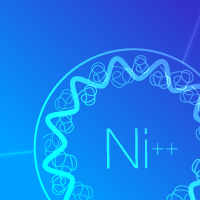Recombinant protein production is an important part of many studies in nearly all research settings, from academic institutions to the biopharmaceutical and agricultural industries. Having the right tools to produce and purify tagged proteins can make a big difference in the ability to efficiently obtain meaningful data and make the most of every experiment. While conventional methods require a lot of time and effort, Capturem his-tagged purification kits mark the beginning of a protein purification revolution. By uniting speed, ease of use, and high capacity in one powerful system, protein work can move forward as never before.
Traditionally, the protein purification task has fallen to immobilized metal affinity chromatography (IMAC) resin columns, which provide high capacity but require several hours to complete, due to long equilibration and binding times, as well as slow diffusion of large molecules through the resin bed. Capturem his-tagged purification kits make use of next-generation membrane technology to get around these bottlenecks and upgrade high-purity, high-throughput purification with a five-minute, room-temperature protocol. Spin columns have been assembled with novel nylon-based membranes specifically modified to have a much higher protein binding capacity when compared to conventional membrane pores. These kits are available in two formats, miniprep, which accommodates up to 800 µl of clarified cell lysate, and maxiprep, which accommodates up to 25 ml of clarified cell lysate or culture supernatant.
| Comparison of Capturem his-tagged purification miniprep and maxiprep kits | ||
|---|---|---|
| Miniprep kit | Maxiprep kit | |
| Yield | ~80 µg/column | ~1.5 mg/column |
| Sample volume | up to 850 µl | up to 23 ml |
| Preparation time | 5 min | 15 min |
| Concentration of eluted protein | ~0.3–1 mg/ml | up to 4.5 mg/ml |

Figure 1. Capturem Ni2+ membrane technology. Each Capturem his-tagged spin column contains a high-capacity Ni2+ membrane with increased surface area, providing much higher protein binding capabilities than traditional membrane pores.
In addition to producing protein of high purity and yield, the speed of this protocol significantly reduces the possibility of protein degradation or loss of activity, thus giving downstream applications a higher probability of success. This convenient, powerful tool performs consistently across native and denaturing conditions, in the presence of additives (e.g., glycerol, TCEP, etc.), and when performing tandem purification.
| Feature | Advantage |
|---|---|
| 5- to 15-min protocol performed at room temperature | Save time and avoid the cold room |
| High ratio of bed volume to wash buffer volume (1:300) | Higher-purity eluates: small bed volume traps fewer contaminants; relatively high amount of wash buffer (300X bed volume) allows for more thorough washing |
| Small bed volume | More concentrated protein (~0.3 to 4.5 mg/ml) |
| Compatibility with mammalian and bacterial cell lysates | Ability to easily work with different experimental systems |
| Short residence time | Save time, reduce possibility of protein degradation or loss of activity; higher success in downstream applications |
| High performance under native or denaturing conditions, and in the presence of common additives | Flexibility to work under a wide range of experimental conditions |
| Functionality with various lysis buffers | Choice of cell-lysis system |








